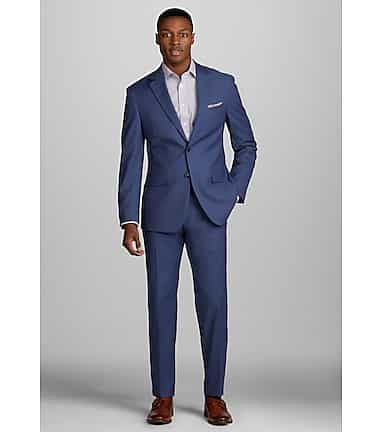Tailored Suits Perth: Boost Your Design with Custom Suits
Tailored Suits Perth: Boost Your Design with Custom Suits
Blog Article
Understanding the Tailoring Process: From Material Selection to Final Fitting for the Suitable Closet
The customizing process is a complex interplay of art and scientific research, starting with the crucial decision of textile option and culminating in the exact changes of last fittings. Each textile type brings one-of-a-kind qualities that influence not only the visual appeal but additionally the garment's longevity and viability for various celebrations. Understanding the subtleties of customizing strategies can boost one's closet to unprecedented degrees of elegance. As we explore these aspects even more, one should think about exactly how even the smallest details can significantly impact the general result of one's personal style.
Relevance of Material Option
Picking the right fabric is crucial in the customizing procedure, as it straight influences the comfort, durability, and total visual of the final garment. The choice of fabric sets the structure for the garment's performance, capability, and design. Different textiles possess unique properties, such as breathability, stretch, and weight, which can significantly impact how the garment drapes and fits the body.

A tailored piece made from an appropriate textile not only showcases craftsmanship but additionally boosts the user's confidence. As a result, comprehending the nuances of material choice is extremely important for any kind of customizing endeavor. It ensures that the final item not only fulfills the aesthetic needs of the client but additionally aligns with functional needs, thus accomplishing a harmonious equilibrium in between kind and function in the customized closet.
Kinds of Fabrics and Their Uses
Understanding the numerous sorts of materials readily available is crucial for making educated choices throughout the customizing procedure. Each textile has special qualities that dictate its viability for particular garments and events.
Its flexibility enables it to be customized right into everything from shirts to gowns. Its all-natural flexibility helps garments maintain shape over time.
Silk exudes luxury and is light-weight, making it perfect for eveningwear and delicate shirts; however, it calls for careful handling due to its fragility. Bed linen, with its textured surface, is a preferred selection for warm climates, giving a crisp and airy feel, but it wrinkles easily, which might influence the garment's appearance.
Artificial textiles, such as polyester and nylon, deal resilience and resistance to wrinkles, making them suitable for everyday wear and energetic clothing. Comprehending these fabric types and their residential or commercial properties enables for better decision-making, ensuring that each tailored item not just fits well yet likewise lines up with the designated objective and event.
The Tailoring Methods Described
The art of customizing depends on a selection of methods that change textile right into well-fitted garments. Central to this process is pattern drafting, where a dressmaker creates themes based upon the client's dimensions and desired design. This first step makes sure that the garment will certainly fit the user correctly before any reducing takes place.
When patterns are established, reducing methods come into play. Precision is critical as mistakes can lead to misfitting garments. Tailors frequently utilize numerous reducing approaches, such as single-layer reducing for elaborate designs and multiple-layer cutting for performance on standard check my reference patterns.
Basting is one more crucial method, permitting dressmakers to briefly stitch fabric pieces together for an initial fitting (tailor perth). This approach offers the possibility to examine the drape and general shape prior to last stitching
Seaming methods, including flat-felled joints and French seams, improve the garment's toughness and aesthetic appeal. Tailors also use strategies such as interfacing and cushioning to offer structure and shape to certain locations, like collars and shoulders.
Finally, ending up methods, consisting of hemming and edge completing, guarantee the garment's longevity while giving a sleek appearance. Together, these techniques develop the foundation of efficient customizing, leading to splendid, custom-fit garments.

Suitable Modifications and Considerations
After the first customizing techniques have actually been applied and the garment is constructed, suitable adjustments become paramount to accomplishing the best fit. These modifications resolve various aspects of the garment, guaranteeing it contours to the user's physique and enhances general appearance.

The surge of trousers is one more vital element; it should sit easily above the hips without causing discomfort, enabling helpful hints convenience of movement. Hemming lengths for both pants and skirts should show the wearer's recommended style while valuing proportions.
Moreover, focus must be offered to the back of the garment, guaranteeing that there are no from this source undesirable pulls or excess textile - tailor tuxedos perth. Each change should be carefully thought about, as also small modifications can substantially affect the general fit and aesthetic of the customized piece, inevitably causing a wardrobe that exudes confidence and sophistication
Maintaining Your Tailored Wardrobe
Appropriate upkeep of customized garments is vital to preserving their fit and look in time. To make sure longevity, routine cleansing is vital. Always adhere to the care tag instructions, which may suggest dry cleansing for delicate textiles or maker washing for more sturdy materials. Avoid regular laundering, as this can use down the textile and alter the garment's shape.
Storage is equally important; use cushioned wall mounts for coats and coats to maintain shoulder framework, and store trousers folded nicely or hung to stop creasing. Secure garments from direct sunshine, which can discolor colors and damage fibers.
In addition, regular assessments for small repairs can prevent bigger concerns. Look for loose buttons, tearing seams, or signs of moth damages, resolving these troubles immediately to keep the garment's integrity.
Finally, take into consideration seasonal rotation. Using tailored items in moderation enables fabrics to recuperate, expanding their lifespan. By carrying out these maintenance strategies, you can guarantee that your tailored garments stay as excellent as the day you initially used them, enhancing your perfect closet for years to come.
Final Thought
The customizing process, including fabric option, experienced methods, and exact fitting modifications, plays an essential role in creating garments that boost both comfort and design. Comprehending the significance of upkeep extends the life of tailored garments, strengthening their worth in a well-curated wardrobe.
Report this page